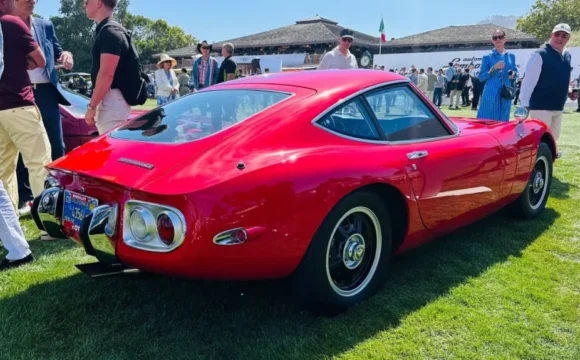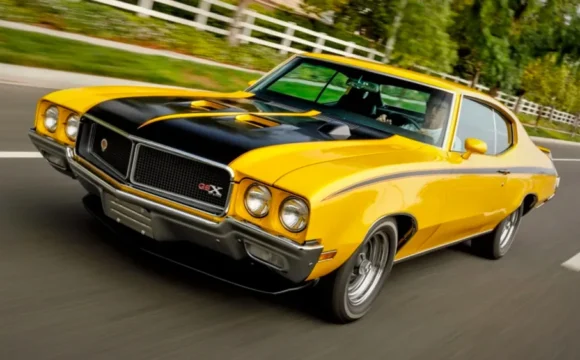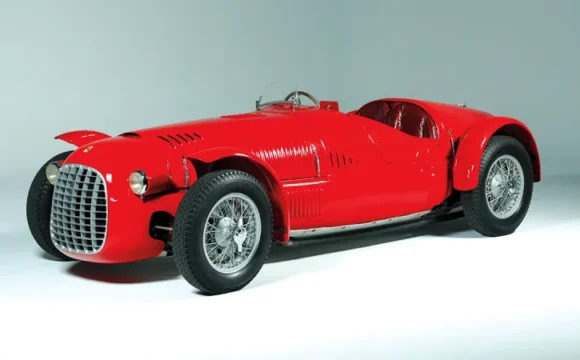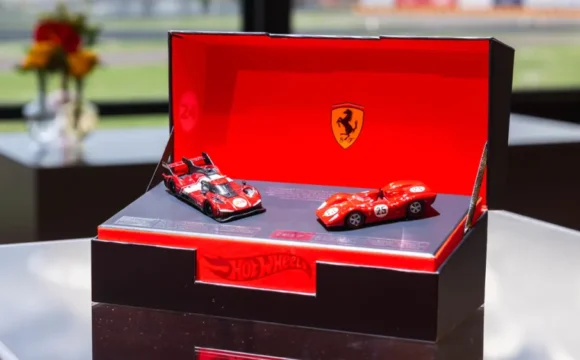แม้ว่าผู้ผลิตรถยนต์หรูหรามักจะมีคอร์สสอนขับบนสนามแข่งสำหรับรถยนต์สมรรถนะสูงรุ่นใหม่ แต่โปรแกรม Corso Pilota Classiche ของเฟอร์รารี่นั้น มุ่งเน้นไปที่การสอนเจ้าของรถถึง “วิธี” การดึงศักยภาพสูงสุดออกมาจากรถเฟอร์รารี่รุ่นเก่าต่อไปนี้เป็นเคล็ดลับจากสนามแข่งที่เราเก็บมาฝากกัน
- ปรับทัศนคติ
เฟอร์รารี่รุ่นคลาสสิคอาจดูเร็วบนโปสเตอร์สมัยเด็กของคุณ แต่ความเร็วของมันเทียบไม่ได้กับรถยนต์ยุคใหม่ (ฟังดูเหมือนเป็นเรื่องที่เข้าใจง่าย แต่คุณจะแปลกใจที่หลายคนอยากเหยียบ 250 GT ของตัวเองแรงๆ เหมือนขับ 812 Superfast) รถสปอร์ตคลาสสิคเหล่านี้ต้องการความใจเย็นในการเปลี่ยนเกียร์ เข้าโค้ง และเบรก การเรียนรู้เทคนิคการ “แตะปลายคลัทช์พร้อมกับเบรก” จะช่วยเพิ่มเสถียรภาพท้ายรถขณะเบรกและลดเกียร์พร้อมกัน นอกจากนี้ ความเอาใส่ใจเครื่องยนต์ก็เป็นสิ่งสำคัญ การ “ดับเครื่องด้วยการเข้าเกียร์ต่ำ” (double-clutch) เป็นอีกทักษะสำคัญในการขับเกียร์ธรรมดาแบบไม่ซิงโครไนซ์ที่พบในรถรุ่นเก่า
- หลงใหลในเอกลักษณ์เฉพาะตัว
รถยนต์วินเทจ ผลิตขึ้นด้วยวิศวกรรมที่หลากหลายมากกว่ารถยนต์รุ่นใหม่ที่ผลิตจำนวนมาก ซึ่งหมายความว่าไม่เพียงแต่ลักษณะการขับขี่จะแปลกกว่าและคาดเดาได้ยากเท่านั้น แต่รถสองคันที่ดูเหมือนกันทุกประการก็อาจจะขับแตกต่างกันได้เนื่องจากความคลาดเคลื่อนในการผลิตหรือความแตกต่างในการตั้งศูนย์และการปรับแต่ง อย่าลืมใช้เวลาศึกษาเกี่ยวกับการกระจายน้ำหนักของรถ: Ferrari Testarossa เครื่องวางกลางปี 1989 ที่มีน้ำหนัก 60% อยู่ด้านหลัง มีแนวโน้มที่จะหมุนมากกว่า Ferrari 365 GTB/4 ปี 1969 ที่เครื่องวางหน้าที่กระจายน้ำหนัก 50:50 การปรับเปลี่ยนเทคนิคการขับขี่ให้เข้ากับลักษณะเฉพาะของรถของคุณเท่านั้นที่จะช่วยให้คุณควบคุมมันได้อย่างเต็มที่
- สัมผัส ขับเคลื่อน และรับรู้ถึง “ขีดจำกัด”
ตั้งแต่เครื่องยนต์รอบต่ำไปจนถึงแก้มยางที่สูงกว่า รถสปอร์ตคลาสสิคเหล่านี้มีขอบเขตประสิทธิภาพที่แคบกว่า แต่ก็ควบคุมได้ง่ายกว่าซูเปอร์คาร์สมัยใหม่ เมื่อคุณเข้าใกล้ขีดจำกัดของรถ คุณจะพบกับเสียงตอบรับและการสื่อสารมากมาย ตั้งแต่เสียงยางที่กระทบกระเทือน ไปจนถึงพวงมาลัยที่สั่น การขับรถคลาสสิคด้วยความเร็ว ส่วนหนึ่งคือการเรียนรู้ที่จะรับรู้ “บทเพลง” เหล่านั้น นอกจากนี้ มันอาจช่วยชีวิตคุณได้ ดังที่ผู้สอน Corso Pilota Classiche คนหนึ่งกล่าวว่า “สิ่งเดียวที่จะปกป้องคุณจากความผิดพลาดคือ สายสัมพันธ์ของคุณกับรถ” รถเหล่านี้ส่วนใหญ่ไม่มีระบบช่วยเหลืออิเล็กทรอนิกส์เหมือนรถยนต์ยุคใหม่ การขับแบบหักโหมหรือละเลยสัญญาณเตือนจากรถ ก็เหมือนกับการพาตัวเองไปเสี่ยงกับค่าซ่อมแสนแพง (อย่างดีที่สุด)
- เรียนรู้วิธีดูแลรักษาอย่างถูกวิธี
รถสปอร์ตคลาสสิคไม่ได้แข็งแรงทนทานเท่ารถยุคใหม่ ตั้งแต่ระบบระบายความร้อนไปจนถึงระบบเบรก เทคโนโลยีมีการพัฒนาขึ้นมากตั้งแต่ยุคคาร์บูเรเตอร์และเกียร์แบบธรรมดา น้ำมันเครื่อง น้ำมันคลัทช์ น้ำมันเบรก และน้ำมันเกียร์ ควรเปลี่ยนทุกๆ 15,000 กิโลเมตร เมื่อเก็บรักษารถคลาสสิคเป็นเวลานาน ควรเติมน้ำมันให้เต็มถังเพื่อป้องกันน้ำมันเชื้อเพลิงสลาย
- ขับบ่อยๆ
แม้จะเป็นรถที่ค่อนข้างละเอียดอ่อนและบอบบาง แต่ก็อย่าลืมว่าเฟอร์รารี่คลาสสิคเหล่านี้ ถูกสร้างมาเพื่อให้ขับ คุณไม่ต้องกลัวที่จะเอารถออกไปขับเล่นสักหน่อย การใช้งานเครื่องยนต์อย่างสม่ำเสมอ ช่วยให้เครื่องยนต์ทำงานได้อย่างมีประสิทธิภาพ และแน่นอน มันคือความสนุกที่แท้จริงของการเป็นเจ้าของรถคลาสสิค!
บทความโดย Basem Wasef
Pretty much all luxury automakers offer track experiences bundled with their latest performance cars, but Ferrari’s Corso Pilota Classiche program instructs owners on how to get the most out of older Prancing Horse breeds. Here are a few tips we picked up around the track.
- Get Your Mind Right
Classic Ferraris may have looked fast on your childhood poster, but their pace pales in comparison to modern cars. (It sounds obvious, but you’d be surprised by how many people want to hammer their 250 GT like an 812 Superfast.) Vintage exotics require patience when shifting, cornering, and stopping; learning to heel-and-toe will improve the car’s rear-end stability under simultaneous braking and downshifting while matching engine revs between gears—and since a little mechanical sympathy goes a long way, the ability to double-clutch is another key skill when dealing with older unsynchronized manual transmissions.
- Love What Makes Your Steed Unique
Vintage machines are engineered with far more variability than mass-produced late-model cars, which means that not only are their driving characteristics quirkier and harder to predict, but two seemingly identical examples can drive differently thanks to manufacturing variances or vagaries in alignment and tuning. And be sure to take the time to understand how to work with your vehicle’s weight distribution: A mid-engined 1989 Ferrari Testarossa, with 60 percent of its weight at the back, will be more apt to spin than a front-engined 1969 Ferrari 365 GTB/4 with 50:50 dispersal. Only by modifying your tactics to work around your car’s distinct characteristics will you learn to bring it to a full gallop.
- Live (and Listen) on the Edge
From slower-revving engines to taller tire sidewalls, older exotics offer narrower performance envelopes, but ones that are more easily explored than in contemporary supercars. As you approach your vehicle’s limits, you’ll find a world of feedback and communication, from chattering tires to a dancing steering wheel, and much of the joy of piloting a classic at speed is learning to tune into that symphony of sounds and sensations. Plus, it might save your bacon—as one Corso Pilota Classiche instructor put it, “The only thing that will protect you from your mistakes is your bond with the car." These machines mostly lack the electronic aids that today’s drivers take for granted—push too hard or ignore what the car is trying to tell you, and you’re flirting with an extremely expensive repair bill (at best).
- Learn How to Stable Properly
Classic exotics aren’t built as robustly as their modern counterparts; from cooling systems to braking capabilities, technology has come a long way since the days of carburetors and crash boxes. Vital fluids, such as those for the clutch and brake as well as the manual-gearbox oil, should be replaced every 10,000 to 15,000 miles. When storing an older car for a long stretch, keep the gas tank filled to minimize water buildup but add a stabilizer to prevent fuel breakdown.
- Exercise Frequently
Yes, they’re finicky and relatively fragile, but remember: These machines were built to be driven. Don’t be afraid to take yours out and give the speedometer a twirl. It’s actually the best way to ensure greater reliability in the long run—not to mention the most fun.
The article by Basem Wasef








